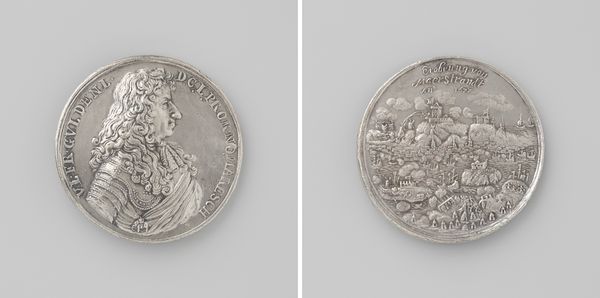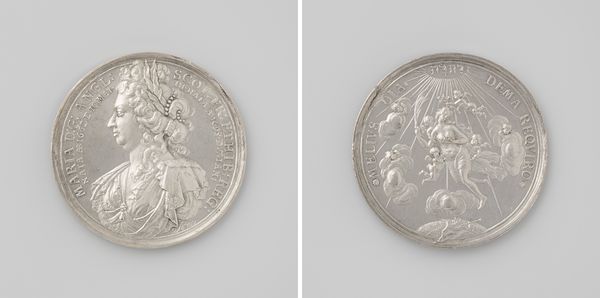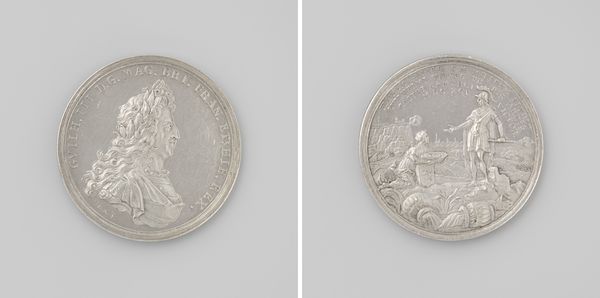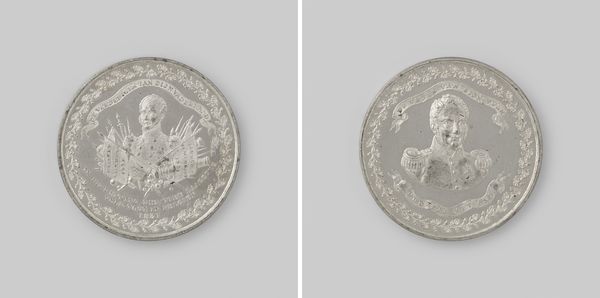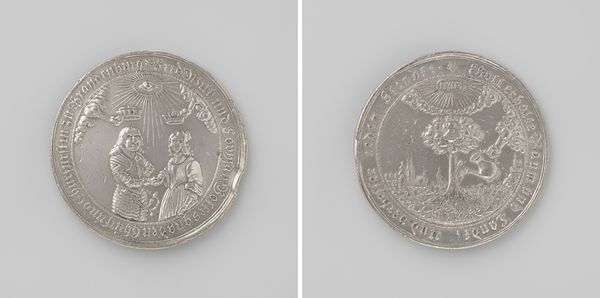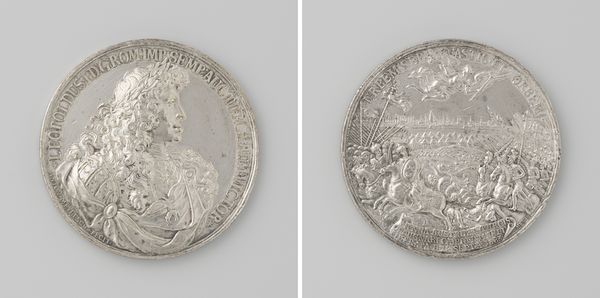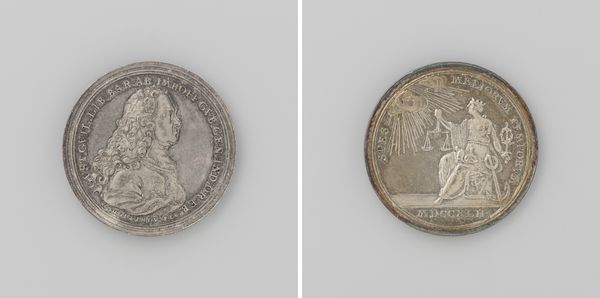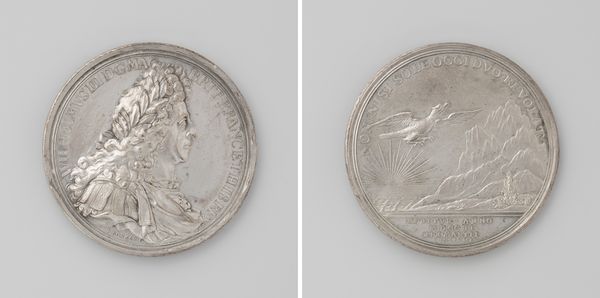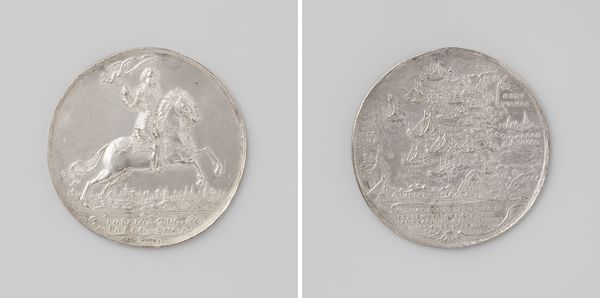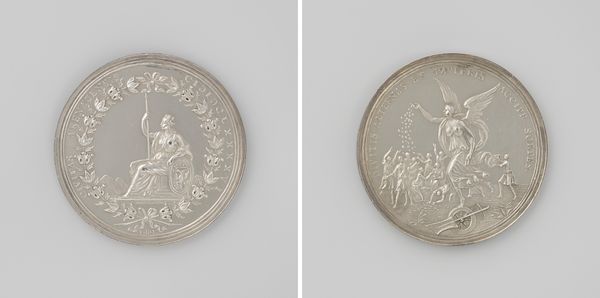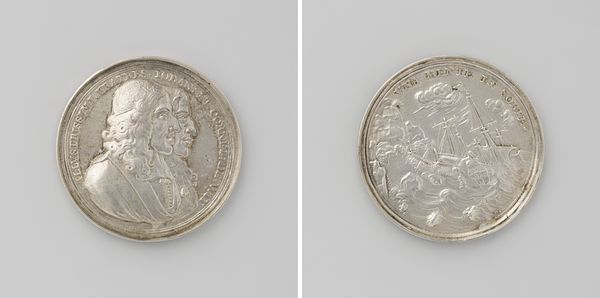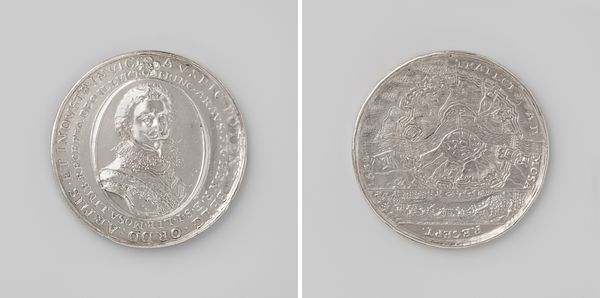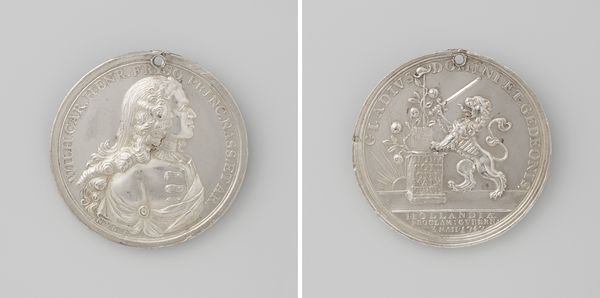
print, metal, sculpture, engraving
#
portrait
#
allegory
#
narrative-art
#
baroque
# print
#
metal
#
sculpture
#
history-painting
#
engraving
Dimensions: diameter 4.3 cm, weight 28.79 gr
Copyright: Rijks Museum: Open Domain
Editor: So, this is "Inname van Doornik," made in 1709. It's a silver medal, which is really neat. It seems to show a seated figure and some sort of town being struck by lightning, and on the other side some symbols I cannot quite decipher. What do you see in this piece that I might be missing? Curator: I see a fascinating piece of propaganda, expertly crafted to circulate a specific political message. Let’s consider the material itself: silver. A precious metal, denoting value and importance, used here to commemorate a military victory. How does the use of silver elevate the event it depicts, or perhaps the patron who commissioned it? Editor: That's an interesting perspective! I hadn't thought about the choice of silver as part of the message itself. Is it then that the material, beyond simply depicting the event, reinforces a particular reading of it? Curator: Exactly! Think about the engraving process too. The labour involved in meticulously carving the design into metal, a reproducible format meant for distribution. Who would have been the intended audience, and how might this medal have functioned within the social and economic systems of its time? Editor: I guess it's easy to look at these old things in a glass case and forget they were someone's bling, or currency, or pronouncements. That makes you wonder what the metal was 'saying' to the elites. Curator: Precisely. And the multiple reproductions of the imagery. This wasn’t a unique painting for private contemplation, but a crafted item intended to disseminate a specific, material narrative to many people. Did the medal reach the working people, those conscripted for the armies of Europe at the time? What might they have felt touching it? Editor: Okay, I think I understand a lot better now. It is both a celebration and a tool that helps understand more of the economic/political conditions around its making and reception. Curator: Indeed. Every material choice, every stage of production, whispers of the socio-political context that shaped its creation.
Comments
No comments
Be the first to comment and join the conversation on the ultimate creative platform.
